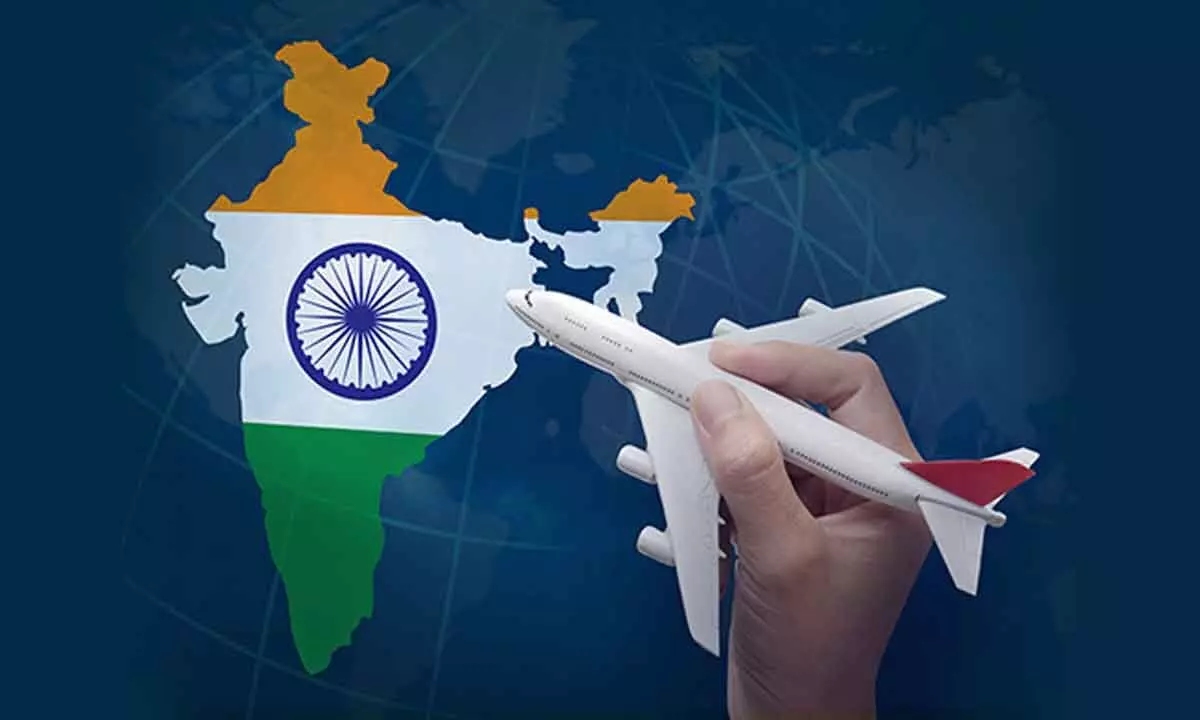Focus on making Indian aviation a robust and financially sound sector
image for illustrative purpose

Airlines, airport operators, airport on-site enterprises (restaurants and retail), aircraft manufacturers and air navigation service providers together employ 404,000 people in India. These are apart from the 943,000 livelihoods created from buying goods and services from local suppliers and supporting 553,000 jobs through the wages it pays its employees, most which are subsequently spent on consumer goods and services. Foreign tourists arriving by air to India, who spend their money in the local economy, are estimated to support an additional 4.3 million jobs. In total 6.2 million jobs are supported by air transport and tourists arriving by air. The air transport industry, including airlines and its supply chain, are estimated to support $13 billion of GDP in India. Spending by foreign tourists supports a further $22 billion of the country’s GDP, totalling to $35 billion. In total, 1.5 per cent of the country’s GDP is supported by inputs to the air transport sector and foreign tourists arriving by air. Air transport generates benefits to consumers and the wider economy by providing speedy connections between cities. These virtual bridges in the air enable the economic flows of goods, investments, people and ideas that are the fundamental drivers of economic growth.
India’s connections to Asia-Pacific have grown the fastest over the last five years. Asia-Pacific is the largest source of arrivals to India, followed by Middle East and Europe. Approximately, 126 million passengers arrived in India from Asia-Pacific (85 per cent of total); 13.1 million from the Middle East (8.9 per cent of the total) and 4.5 million passengers from Europe (three percent). Air transport market in India is forecast under the “current trends” scenario to grow by 262% in the next 20 years. This would result in an additional 370.3 million passenger journeys by 2037. If met, this increased demand would support approximately $126.7 billion of GDP and almost 9.1 million jobs. India’s potential for further growth and industry development is quite distinct. Indeed, we expect air passenger numbers to, from and within India to increase by 3.3x over the next 20 years. This significant expansion is expected to be underpinned by a trebling in the proportion of middle-class households and further increases in time-saving options for air passengers. This highlights the important role aviation can play in connecting the country – both internally and with the rest of the world. This strong growth outlook for air passenger demand will see the country overtake Germany, Japan, Spain, and the UK within the next 10 years to become the world’s third largest air passenger market.
These are exciting times for the air transport industry in India. Of course, the future will not be without challenges – for both those in the industry and policy-makers and regulators alike. These challenges will include ensuring that the right type of infrastructure is put in place, at the right time and in the right location so that that the demand is met and there is a regulatory environment that fosters a competitive and healthy airline transport sector, which will continue to make a major contribution to the economy in the years to come. A robust and financially sound industry is critical to delivering the benefits that aviation can bring – creating jobs, bringing families together, facilitating business, and supporting trade, investment and economic growth.

